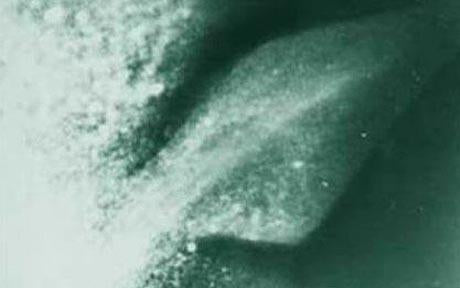The Loch Ness Monster

Returning to Iona from his mission to Christianise the Picts, Saint Columba approached one of the crossing points of the River Ness. There was a small settlement here, and a group of people were digging a grave for a newly dead man. When Columba asked how the man had died he was told he had been killed by a monster who lived in the loch.
This interested the saint but did not seem to worry him, for he let one of his monks, Lugne Mocumin, swim across the Ness to fetch a boat which bobbed against the opposite bank. Celtic monks were a hardy breed and Lugne cheefully leaped into the water and began to swim to the boat. He was about halfway across when the monster reappeared.
Columba, however, was equal to any monster. ‘The blessed man raised his holy hand,’ Adamnan, his biographer, wrote, ‘while all the rest were stupefied with terror, and commanded the monster, saying: “Thou shalt go no further nor touch the man. Go back with all speed!” As extra insurance, the saint made the sign of the cross. That was enough for the monster: it fled.
It is over70 years since the spate of recent sightings began, or at least since the monster became popular in the public imagination. Perhaps the advent of tourism has something to do with it, or the increased use of media coverage so that what was once of purely local importance has become widely known.
If there seems a lot of fuss generated about the possible existence of an unidentified animal in an otherwise obscure Scottish loch, maybe it is better to concentrate on something interesting, unimportant and romantic than on the relentless realities of the world.

It was in spring 1933 that a local couple saw something like a whale on the waters of Loch Ness. The Inverness Courier reported a ‘Strange Spectacle on Loch Ness’ and from there on Nessie has never looked back. That same year the term ‘Loch Ness Monster’ was used, and so the legend was born, or reborn, as the case may be. Every year now, people gather at the lochside, hoping for a glimpse of the supposed monster. Some are lucky, most are not.
At 24 miles long and about one mile wide, Loch Ness has not a huge area of surface water in which to hide a monster, less so a family of monsters. However the loch is deep: about 700 feet on average and far deeper in places; in fact, the loch is so deep it has never been known to freeze. At its widest and deepest point, where the ruined medieval Urquhart Castle presides over the dark water, Nessie most often surfaces. Here the mountains subside and Glen Urquhart gouges deep into the land, a natural lay-by for Nessie.
There is a dramatic photograph of something on the loch around here, with the shattered keep of Urquhart providing both scale and evidence of place. A tree branch perhaps? Or the wake of a boat? Perhaps – and perhaps not.
Not only simple cameras have been used to record the presence of something unusual in the loch. Many types of electronic gadgetry have been used, including sonar, radar scanning and mini-submarines, but all the results seem to have been inconclusive. Vague shapes, formless shadows in murky waters, the detection of what could be a shoal of fish – or something else.
 \
\
Then, in 1975, came a breakthrough. One of the many research parties from the United States claimed to have photographed a plesiosaur in the loch. Not only one, but an entire family, according tp Peter Scott of the World Wildlife Trust, could live in Loch Ness. This created pandemonium in the intellectual world and a debate on Nessie was to be held in Edinburgh. This was the high point. The meeting was cancelled, the photographs were never published and the discussion reached the House of Commons. Was Nessie being protected? A reply was given when some members of parliament were allowed to study the evidence and, ultimately, Nessie was granted a Latin name, Nessiteras Rhombopteryx. This, apparently, means ‘Loch Ness marvel with a diamond-shaped fin’. Anagrammatically, it also reads ‘Monster hoax by Peter S’.
Monster hoax? There have been something like 10,000 sightings since Columba’s time; the beast has been seen on land and water, it has been chased by motorcyclists and crossed the road in front of motorcars; it has been photographed and traced on sonar. It has been scoffed at by millions. Nessie is part of the legend of Scotland and far too interesting to dismiss as a mere hoax.
